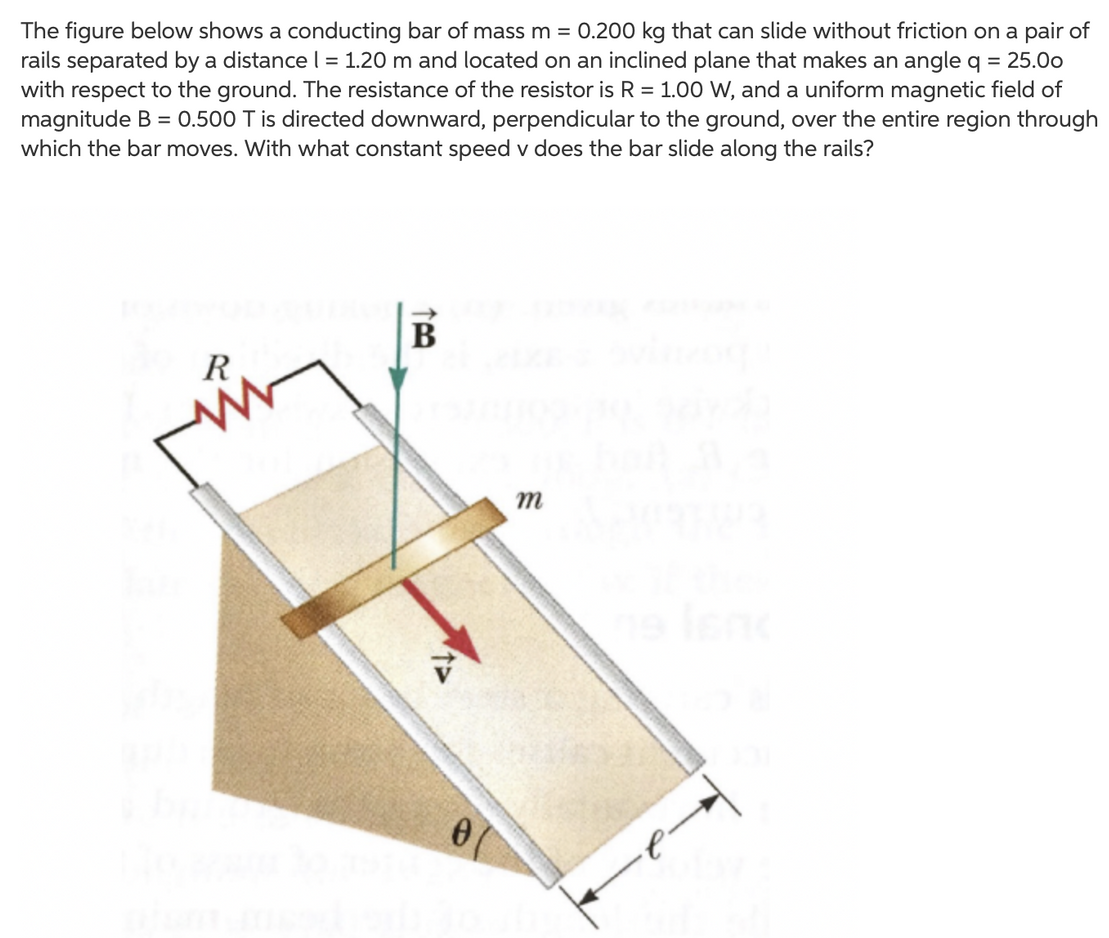The figure below shows a conducting bar of mass m = 0.200 kg that can slide without friction on a pair of rails separated by a distance I = 1.20 m and located on an inclined plane that makes an angle q = 25.0o with respect to the ground. The resistance of the resistor is R = 1.00 W, and a uniform magnetic field of magnitude B = 0.500 T is directed downward, perpendicular to the ground, over the entire region through which the bar moves. With what constant speed v does the bar slide along the rails?
